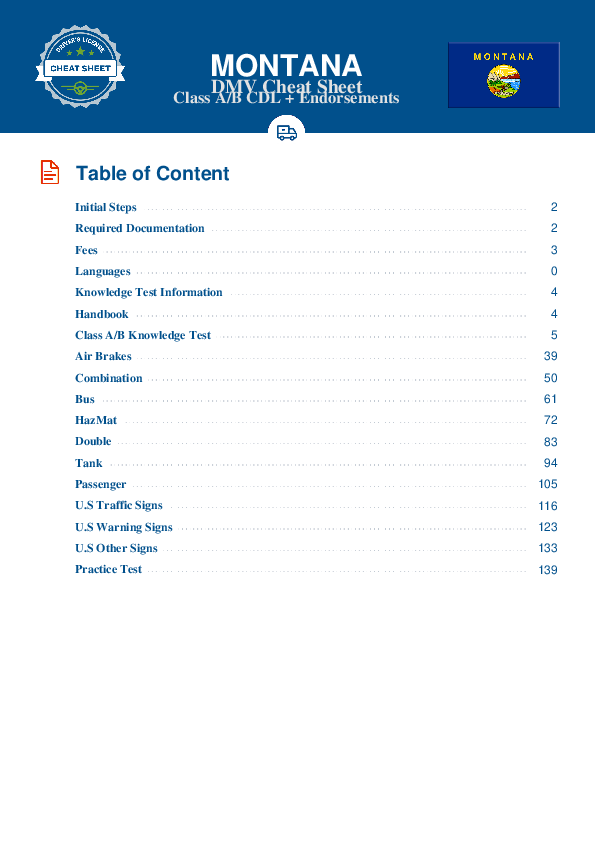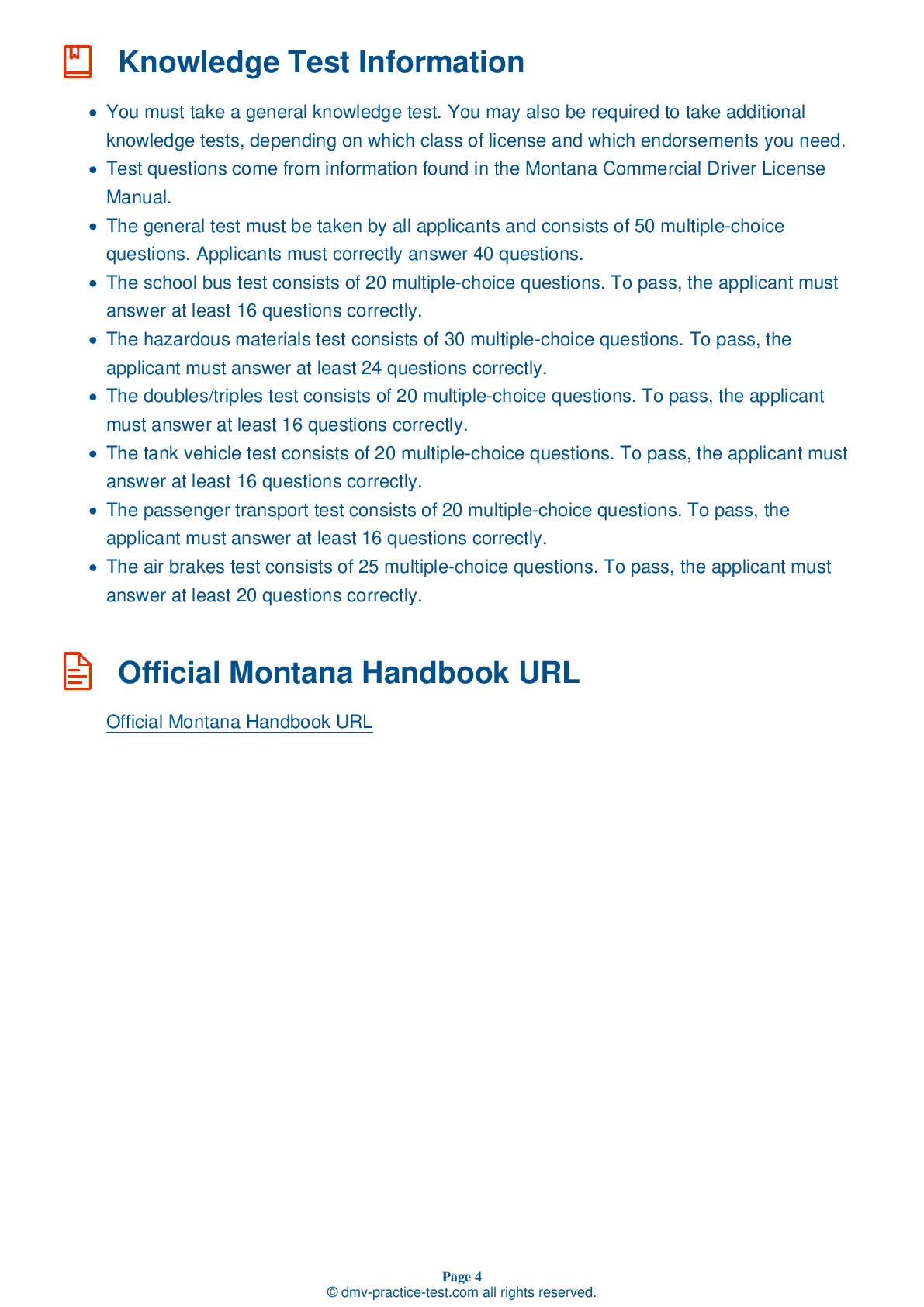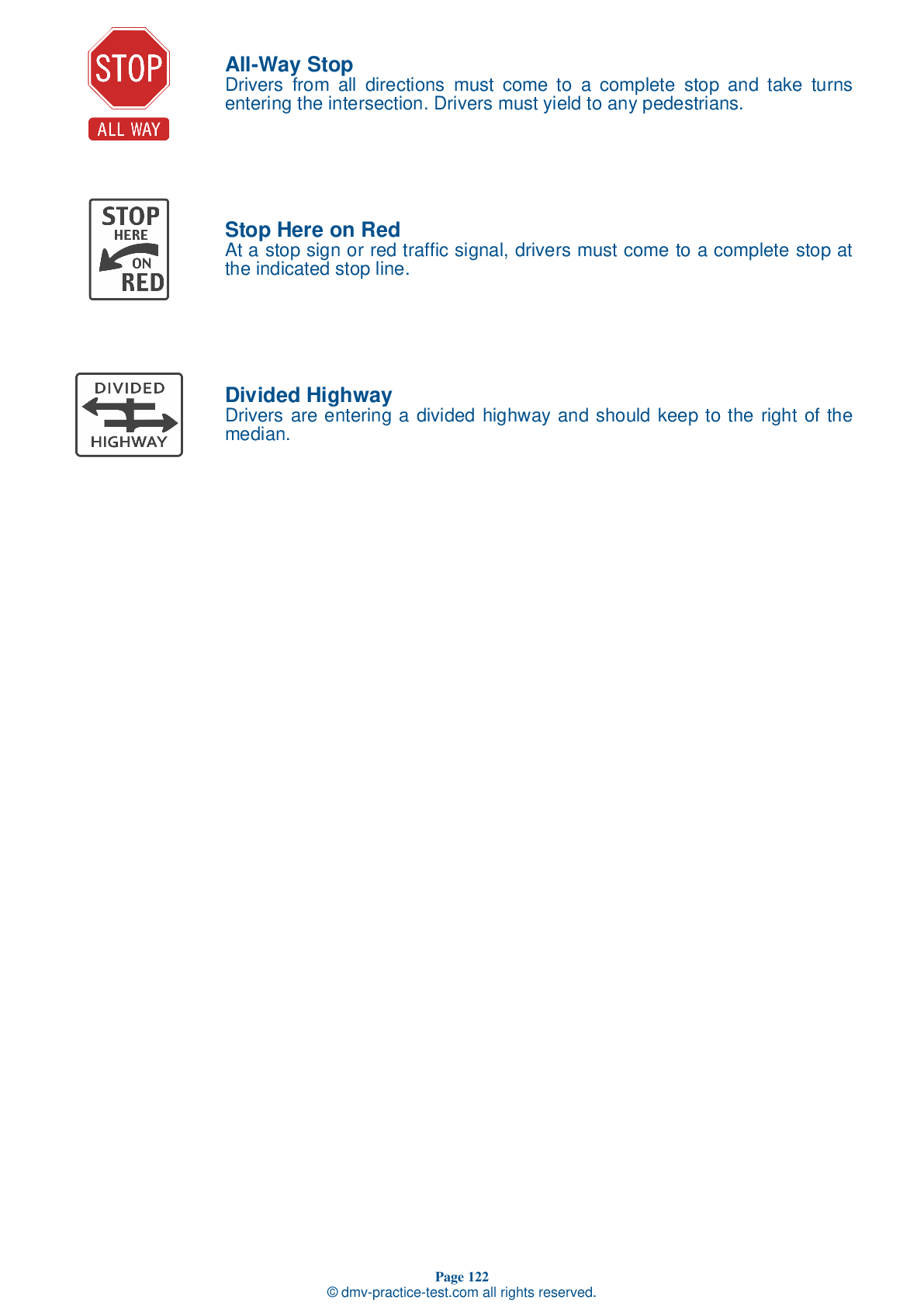Bus #2
Bus Driver Testing | Montana 2025 #2 Page 2 of 3
Train for FREE online with our MT bus CDL test. The official exam test consists of several obligatory parts, with all of them checking your knowledge of different blocks of road rules. If you need to obtain a license in Montana in 2025, learn how to become a bus driver and then practice as much as possible. Free sample tests published on our website will help you check and improve your knowledge and boost your grades. Please bear in mind that DMV requirements for a bus driver may vary from state to state.
20
16
20
8 . When dropping off students at a school, a driver should:
When unloading students at a school, a bus driver must secure the bus by turning off the engine. If they must leave the driver's compartment, they should remove the key from the ignition. The driver must supervise the unloading process.
9 . Properly adjusted mirrors on a school bus allow the driver to see ____ behind the bus.
Four bus lengths
Proper mirror adjustment is vital to the safe operation of a school bus. A bus's flat mirrors should be adjusted so the driver is able to see 200 feet, or four bus lengths, behind the bus.
10 . The overhead rearview mirror is located:
On a school bus, the overhead inside rearview mirror is mounted directly above the windshield on the driver’s side of the bus. This mirror should be used to monitor students inside the bus.
11 . What do outside crossover mirrors allow a driver to see?
The left side of the bus
Crossover mirrors are used to help a school bus driver see the danger zone area directly in front of the bus, as well as the danger zone areas to the left and right sides of the bus, including the area from the front of the bus to the service door.
12 . While students load and unload a bus, the driver should:
Listen to the radio.
The driver of a school bus should observe students as they enter or exit the bus to ensure that they are not caught in the door or handrails. It is also important to make sure the students have moved a safe distance away from the unloading area after they have exited the bus.
13 . When exiting a vehicle, a driver should:
When exiting your vehicle during the basic vehicle control skills test, you must face the vehicle and maintain three points of contact at all times. If your testing vehicle is a bus, you must maintain contact with the handrail. Exiting the vehicle incorrectly may result in automatic failure of the basic vehicle control skills test.
14 . The overhead inside rearview mirror should be positioned to show:
The top portion of the overhead inside rearview mirror should be positioned to display the top of the bus's rear window. This mirror positioning should allow the driver to see all of the students on the bus, including the heads of the students sitting immediately behind the driver.
2025 Montana | Frequently Asked Questions
To get a CDL Passenger endorsement in Montana, you must first have a valid Montana CDL. You then need to pass the Passenger Transport Test at your local MVD office. This test covers the special regulations and driving skills bus drivers need to know. Lastly, you must pass a driving test in the type of vehicle you will be driving.
To obtain a CDL Passenger license, you must have a valid commercial driver's license (CDL). You should be at least 21 years old for interstate driving or at least 18 for intrastate. You must pass a Passenger Transport written test and a skills test in the vehicle type that fits the class of CDL you're applying for.
While specific training isn't legally required to secure a CDL Passenger endorsement, it's often beneficial. Practical experience driving a similar vehicle and knowledge about passenger safety are advantageous. However, you must pass the Passenger Transport written test and a skills test in the type of vehicle you'll be driving to get the endorsement.
Yes, to obtain a CDL Passenger endorsement, you are required to pass the Passenger Transport written test. This test covers topics like vehicle inspection, loading and trip start, on the road, after-trip vehicle inspection, prohibited practices, and use of brake-door interlocks. After passing the written test, a skills test in the relevant vehicle type is also required.
In the CDL Passenger endorsement assessment, you'll need to demonstrate your ability to safely load and unload passengers, respond to emergency situations, conduct pre-trip vehicle inspections, and operate the vehicle safely. This includes performing turns, stops, and starts, managing intersections and railway crossings, and maintaining control of the vehicle at all times.
No, you cannot legally transport passengers in Montana without a valid CDL Passenger endorsement. This endorsement is specifically required for drivers who wish to operate a vehicle designed to carry 16 or more passengers, including the driver. Driving such a vehicle without the correct endorsement can lead to serious legal consequences.
Yes, you can add the CDL Passenger endorsement to your existing license. You do not need to apply for a new license. However, you will need to pass the required knowledge test and skills test for passenger vehicles, and pay the required fees. Once you pass these tests, the endorsement will be added to your existing CDL.
Yes, there are specific restrictions for drivers with a CDL Passenger endorsement. For instance, you must always wear a seat belt, can't use a cell phone while driving, and must not exceed the passenger capacity of the vehicle. Additionally, you must comply with hours-of-service regulations and maintain a logbook of your driving hours. Violating these rules can lead to penalties or loss of your endorsement.
Yes, there are age-related prerequisites for acquiring the CDL Passenger endorsement in Montana. You must be at least 18 years old to drive within Montana (intrastate) and at least 21 years old to drive across state lines (interstate) or transport hazardous materials. You also need to hold a valid CDL before you can add the Passenger endorsement.
With a CDL Passenger endorsement in Montana, you will be eligible to operate vehicles designed to transport 16 or more passengers, including the driver. This includes buses, vans, and other vehicles used for public transportation, as well as school buses and vehicles used by religious organizations.



